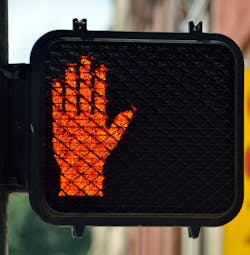A new study from the Insurance Institute for Highway Safety (IIHS) show that pedestrian deaths have jumped 46% since reaching their lowest point in 2009, as pedestrian crashes have become both deadlier and more frequent.
According to the IIHS study, a total of 5,987 pedestrians were killed in crashes in 2016, accounting for 16% of all crash fatalities. The number of pedestrians killed each year has declined 20% since 1975, but the 2016 toll was the highest since 1990.
The IIHS researchers found that not only did pedestrian crashes increase, they also became deadlier. Deaths per 100 crash involvements increased 29% from 2010, when they reached their lowest point, to 2015, the most recent year that data on all crashes, including non-fatal ones, were available.
From 2009 to 2016, the largest increases in pedestrian deaths occurred under the circumstances that historically have seen the highest numbers of pedestrian fatalities. Pedestrian deaths increased 54% in urban areas, which include both cities as well as suburban areas. They also increased 67% on arterials, 50% at non-intersections and 56% in the dark.
Among some of the proposed changes in road designs that could work to curb the number of pedestrian fatalities, IIHS researchers suggest a pedestrian-activated beacon at key crosswalks, such as the pedestrian hybrid beacon, which stays dark until a pedestrian pushes a button, at which point it flashes yellow, and then moves to solid yellow before activating two solid red lights.
Other proposed roadway design improvements include road diets, in which the number of travel lanes for vehicle traffic is reduced. Lower speed limits as well as broader use of speed cameras to enforce existing limits is another solution proposed to mitigate the risk to pedestrian safety.
Changes to vehicles were also proposed, including better headlights for drivers to better recognize pedestrians sooner, as well as crash prevention systems that also can recognize pedestrians in the roadway.
---------
Source: Insurance Institute for Highway Safety, Highway Loss Data Institute



